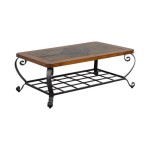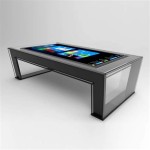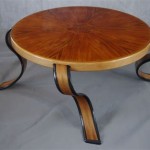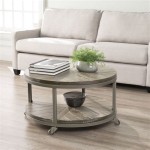What Causes a Glass Table to Shatter?
Glass tables, known for their elegance and modern appeal, are a common feature in many homes and offices. However, the sudden and sometimes explosive shattering of a glass table can be unsettling and even dangerous. Understanding the underlying causes of this phenomenon is crucial for preventing accidents and ensuring the longevity of these furniture pieces. While glass appears to be a solid and rigid material, it is actually amorphous, meaning its structure lacks the long-range order of crystalline solids. This unique structure, coupled with various external and internal factors, makes glass susceptible to shattering under specific conditions.
Several factors can contribute to the disintegration of a glass table. These factors can be broadly categorized as thermal stress, mechanical stress (including impact and pressure), internal flaws, and environmental conditions. Each of these plays a significant role, either independently or in combination, in compromising the structural integrity of the glass and leading to its eventual failure.
Thermal Stress and Temperature Fluctuations
Glass is a poor conductor of heat, meaning that temperature differences within the glass can create significant stress. This phenomenon, known as thermal stress, occurs when different parts of the glass expand or contract at different rates due to uneven heating or cooling. When one part of the table heats up faster than another, the hotter area attempts to expand, while the cooler area resists this expansion. This difference in expansion rates creates internal stresses that can exceed the glass's tensile strength, eventually leading to fracture.
Direct sunlight is a common culprit in inducing thermal stress. When sunlight shines on only a portion of the glass table, that area heats up significantly faster than the shaded areas. This uneven heating is particularly problematic in darker glass, which absorbs more heat. Similarly, placing hot objects directly onto a glass table can cause localized heating resulting in stress concentrations. The rapid temperature change in a localized area can be enough to trigger a crack, which can then propagate rapidly across the entire surface, causing the table to shatter.
Extreme temperature fluctuations, whether seasonal or daily can also contribute to long-term stress accumulation. Constantly shifting between warm and cold temperatures can cause microscopic cracks to form and grow over time. While these cracks may not be immediately visible, they weaken the overall structure of the glass, making it more vulnerable to shattering from even minor impacts or pressure.
Mechanical Stress: Impact and Pressure
Beyond thermal stress, mechanical stress is another major contributing factor to glass table shattering. Mechanical stress refers to the forces exerted on the glass by external objects or pressure. These forces can be applied in various ways, including impact, concentrated pressure, and uneven weight distribution. Even seemingly minor impacts can create significant stress concentrations, especially at the edges and corners of the table, which are typically the weakest points.
Impact, whether from dropping an object onto the table or accidentally bumping into it, can generate a shockwave that travels through the glass. The magnitude of the stress depends on the force of the impact, the size and weight of the object, and the area of contact. A small, hard object dropped from a height can create a concentrated force exceeding the glass's ability to withstand it, leading to immediate fracture. Similarly, dragging heavy objects across the glass surface can create scratches and micro-cracks that weaken the glass over time, increasing the risk of shattering during subsequent use.
Pressure, especially when unevenly distributed, can also cause significant stress. Placing heavy objects in the center of the table is generally acceptable, as the weight is distributed relatively evenly. However, placing a heavy object near the edge or corner can create a localized stress concentration. Additionally, if the table is not perfectly level, one leg may bear more weight than the others, leading to uneven pressure distribution across the glass surface. Over time, this uneven pressure can weaken the glass and increase its susceptibility to shattering.
The design of the table itself also plays a role in its vulnerability to mechanical stress. Tables with intricate designs or sharp angles may have inherent weak points where stress can accumulate. Similarly, if the table's frame does not provide adequate support to the glass top, the glass may be more prone to bending and flexing under pressure, increasing the risk of fracture.
Internal Flaws and Manufacturing Defects
While external factors play a significant role in glass table shattering, internal flaws and manufacturing defects can also dramatically increase the risk. Even with modern manufacturing techniques, glass may contain microscopic imperfections such as bubbles, inclusions (foreign particles trapped within the glass), and surface scratches. These imperfections act as stress concentrators, meaning that they amplify the stress applied to the glass, making it more likely to fracture.
One common type of internal flaw is a nickel sulfide inclusion. These inclusions are tiny particles of nickel sulfide that can expand and contract over time. This expansion, although small, can create significant internal stress within the glass, especially around the inclusion. Eventually, the stress can exceed the glass's tensile strength, leading to spontaneous shattering, sometimes years after the table was manufactured. Nickel sulfide inclusions are more common in tempered glass, though they can also appear in other types of glass.
Manufacturing defects can also include inconsistencies in the annealing process. Annealing is a heat treatment process used to relieve internal stresses in glass. If the annealing process is not properly controlled, residual stresses can remain within the glass, making it more susceptible to shattering. Improperly annealed glass may also be more prone to thermal shock, which is the rapid fracturing of glass due to sudden temperature changes.
The tempering process, designed to increase the strength of glass, can also introduce flaws if not executed precisely. Tempering involves heating the glass to a high temperature and then rapidly cooling it. This process creates a compressive stress layer on the surface of the glass, which makes it more resistant to impact. However, if the cooling process is uneven or too rapid, it can create residual stresses or surface imperfections that compromise the glass's integrity.
Inspect glass tables carefully upon purchase for any visible flaws, such as scratches, bubbles, or distortions. While microscopic flaws may not be detectable, obvious imperfections can indicate a higher risk of shattering. Proper handling and maintenance can also help to mitigate the risk associated with internal flaws.
Furthermore, the thickness of the glass plays a crucial role in its structural integrity. Thicker glass is generally more resistant to stress and impact than thinner glass. Selecting a glass table with an appropriate thickness for its intended use is important for preventing shattering. Tables designed to support heavy loads or withstand frequent use should have thicker glass tops.
Environmental Conditions and Chemical Exposure
Environmental conditions and chemical exposure can also contribute to the deterioration of glass over time, increasing the likelihood of shattering. Prolonged exposure to humidity, extreme temperatures, and certain chemicals can weaken the glass structure and make it more vulnerable to fracture.
High humidity can cause surface corrosion on glass, especially if the glass is not properly sealed or treated. This corrosion can create microscopic pits and cracks on the surface, acting as stress concentrators. Over time, these surface imperfections can weaken the glass, making it more susceptible to shattering from even minor impacts or pressure.
Exposure to harsh chemicals, such as strong acids or alkalis, can also damage the glass surface. These chemicals can react with the silica in the glass, causing etching or weakening of the structure. Even everyday cleaning products containing abrasive substances can gradually erode the glass surface over time. Using gentle, non-abrasive cleaning solutions specifically designed for glass is crucial for maintaining its integrity.
In coastal environments, exposure to salt spray can also be detrimental to glass tables. Saltwater can corrode the glass surface and accelerate the formation of cracks and imperfections. Regularly cleaning and protecting the glass with a sealant designed for marine environments can help mitigate the effects of salt spray.
Additionally, prolonged exposure to ultraviolet (UV) radiation from sunlight can cause discoloration and degradation of the glass. While UV radiation does not directly cause shattering, it can weaken the glass over time, making it more vulnerable to other stresses. Using UV-resistant coatings or placing the glass table in a shaded area can help protect it from the damaging effects of UV radiation.
Ultimately, the shattering of a glass table is often a result of multiple factors acting in combination. While it may be difficult to predict exactly when a glass table will shatter, understanding the underlying causes can help prevent accidents, extend the life of the furniture, and ensure the safety of those around it. Careful handling, proper maintenance, and awareness of environmental factors can significantly reduce the risk of this potentially dangerous occurrence.

Everyday Life How And Why Would A Glass Table Break In This Manner Physics Stack Exchange
Mystery Behind Glass Table Spontaneously Exploding

Everyday Life How And Why Would A Glass Table Break In This Manner Physics Stack Exchange

Glass Table Tops Can Suddenly Explode For No Specific Reason

Everyday Life How And Why Would A Glass Table Break In This Manner Physics Stack Exchange

Glass Tables Are Exploding Here S Why

Niverville Family Says Glass Table Exploded In Their Home Cbc News

Consumer Agency Receives Reports Of Exploding Glass Table Tops

Glass Tables Are Exploding Here S Why

Niverville Family Says Glass Table Exploded In Their Home
Related Posts








